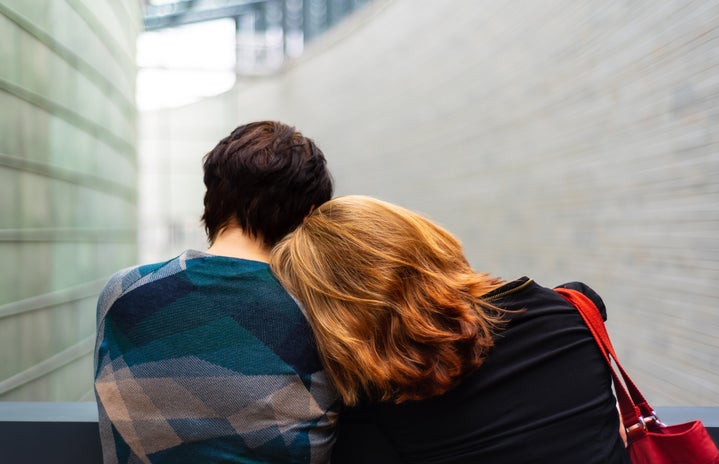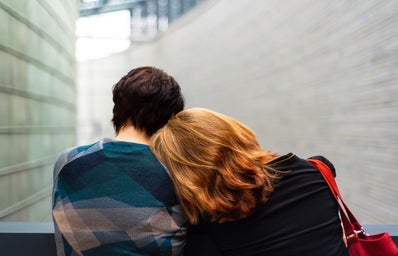Contains spoilers!
One thing that unites me, my mother, and my father together, is our loyal devotion to director Damien Chazelle’s 2016 musical masterpiece, La La Land. So much so that we believe that the human race can be divided into two halves: those that agree that La La Land is not just a movie, but a visceral experience, and those that simply “don’t get it” (we try not to judge the latter, of course, but we find it hard not to). I went to see the film three times in the cinema when I was fifteen – twice with my mother, and once with my father – and each time reduced me to a fit of tears so unruly that I had to lock myself in the nearest toilet cubicle and wait there until they eventually subsided. Even now, seven years on, hearing even the slightest note of Mia and Sebastian’s Theme is enough to make my chest ache.
Even though La La Land’s ending packs a sucker-punch blow to the heart, it’s undeniably the film’s best part. It would not sit so comfortably in the number-one spot of my favourite movies of all-time if it did not end with the poignant look Mia (Emma Stone) and Sebastian (Ryan Gosling) give each other in the final scene. But what is it about the ending that still makes me blubber like a baby, even after my twentieth rewatch?
The film’s finale cannot be defined as tragic; Mia and Seb both find success, having achieved their respective dreams and goals, and they’re happy. What makes the ending so gut-wrenching for me is the harsh reality that for the characters to achieve these goals, they had to make the sacrifice to be apart, and time and circumstance eventually got in the way for them. The last few scenes are fuelled by “what-ifs” and the heart-breaking debate of whether one decision or one choice had been made differently, life may not have ruptured them apart. But they simply were not meant to be. What La La Land’s ending seems to suggest is that we can’t have everything – in order to get what we want, we have to be prepared to let some things go.
As a teenage girl, I was accustomed to the Disney Princess happy ending, in which my favourite films usually ended with a satisfying “I do” sealed by a true-love’s kiss and a handheld ride into the sunset. Perhaps that’s why La La Land affected me so much. I wasn’t used to the reality that real life will never be so black and white, but rather a grey mix of happiness and heartbreak, success and regret. And ever since, it seems I have become addicted to the pain of the La La Land-style ending, for most of my favourite shows and films are laced with the same bittersweet taste. And I’m not the only one with the affinity for the bittersweet.
Shows such as the 2020 series Normal People, an adaptation of Sally Rooney’s 2018 novel of the same name, and Phoebe Waller-Bridge’s Fleabag (2016-2019), have garnered almost cult-like followings in recent years, partly due to the bittersweet ways in which they end. Normal People was BBC’s most-popular hit in 2020, having accumulated over 62 million streams that year alone. The show’s twelve episodes depict the vulnerable relationship between Connell Waldron (Paul Mescal) and Marianne Sheridan (Daisy Edgar-Jones) from their high-school days to university. The relatable presentation of the poignant struggles that commonly define young love and first heartbreak culminates into a bittersweet separation that has remained prevalent in audience’s minds ever since its debut. Similarly, Fleabag, ranked by Rolling Stone as number five of the top 100 best TV shows of all time also has an ending that is painfully beautiful. Having watched Fleabag’s (Phoebe Waller-Bridge’s) journey to self-love and forgiveness come to fruition after her romance with the Priest (Andrew Scott), the infamous words “it’ll pass” have haunted me ever since I first watched it.
Both of these shows, and countless other films and series that feature the same bittersweet endings from the 2023 movie Past Lives to the classic Casablanca (1942), have been watched and rewatched over, and over again, despite us knowing the gut-wrenching finale that is inevitably going to happen. So, why do they have us coming back for more, even when they reduce us to uncontrollable tears? What is it about the bittersweet ending that is just so addictive?
For me, as strange as it sounds, I am oddly more consoled by the bittersweet than I am by the traditional happy ending. A good cry to something like Normal People is not only extremely cathartic, but the representation of flawed characters and imperfect situations allow me to feel comforted about my own. We all miscommunicate, say something we regret, say nothing at all, miss our chance, choose the wrong thing, and love imperfectly. Under the current of heartbreak and loss and fatal mistakes that floats through such works is the affirmation that they are just a part of life, and most often, they are all for the better, and will lead to better things. Perhaps they serve as a blanket of reassurance to remind us that life will always continue, and we’re able to overcome any imperfect situation like that depicted on screen.
The legacy of La La Land lies in its bittersweet ending, and in the heartbreaking smile shared between two characters that recognise that the pain in goodbye doesn’t need to define their outcome, as do Connell and Marianne, Fleabag and the Priest. And while every rewatch of each, almost quite literally, rips my heart out as I reach for the tissues, the bittersweet ending will always be my favourite above the rest, as it’s the one that is the most real.


